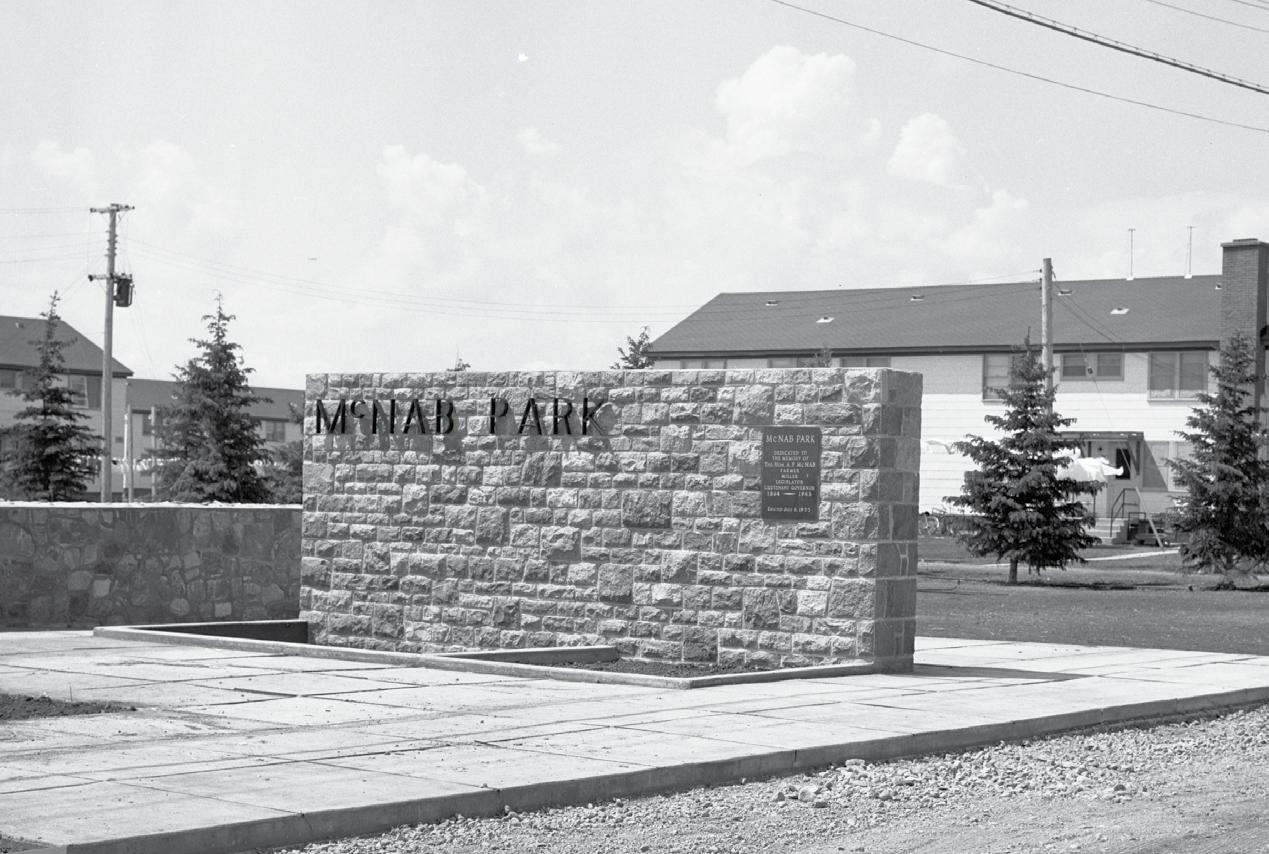
10 minute read
HOMEtown Reflections
McNab Park memorial gateway and plaque, ca. 1960.
Photo Credit: Local History Room - Saskatoon Public Library - QC-215-2
Advertisement
MCnAb PArk
by: JeFF o’brien
Born in the shadow of the atom bomb, McNab Park was once a symbol of the rising tensions between East and West known as the Cold War. Today, this quirkiest of Saskatoon neighbourhoods is the site of a shiny new business park. But for more than half a century, it was a place to call home.
Tucked between Circle Drive and the airport, the McNab Park area was first surveyed more than a hundred years ago, during the city’s first big real estate boom just before the First World War. Like dozens of other fringe-area subdivisions from those days, Devonshire Heights and Drummond Place were never more than a speculator’s daydream. Nothing would be built there until 1952, when the Saskatoon airport underwent a major expansion as an air force training base.
Indeed, the story of McNab Park is inextricably linked to the history of aviation in Saskatoon.
Spirits Soar
Few things symbolize the exuberance and optimism of the 1920s better than the airplane. The “Roaring ‘20s” they called them, and the thing that roared loudest were the engines of aircraft taking to the skies. Newspapers were full of the exploits of daring aerialists as they set and broke records almost daily. Aviation had come to Saskatoon in 1919, when Stan McLelland started a flying service out at the west end of 22nd Street. By 1930, Saskatoon had the second largest flying club in Canada and our own aerial celebrity, Nellie Carson, who set an aviation record that year by flying to 16,000 feet without an oxygen mask.
Saskatoon had its own airport by then, west of Avenue A just past 51st Street. It was a humble affair, with a couple of hangars and a small
building that was sometimes used as a weather station. But in 1939, Canada went to war and in 1940, the federal government transformed our sleepy, country airfield into a sprawling air force training school, one of more than two hundred built across Canada to supply pilots and aircrew for the war effort. By the time the school closed at the end of the war, more than 2,400 pilots had graduated from there.
Airport expansion Calls for married Quarters
But governments around the world were awakening to new geopolitical realities, including, by the 1950s, the prospect of nuclear war. In March of 1951, the Canadian government announced that several of the wartime training schools would be re-opened, including here in Saskatoon, which was to be home to an advanced flying school, training pilots on multi-engined aircraft. Work on the ten-million dollar expansion to the airport began later that spring, including accommodations for at least some of the base families in “PMQs”— Permanent Married Quarters. The training school opened on January 1, 1952 and
Berney Avenue looking north, 1952.

H O M E Y O G A S T U D I O C R E AT E D B Y Y O U . H E A LT H I E R E N V I R O N M E N T C R E AT E D B Y C A R R I E R .

Photo Credit: City of Saskatoon Archives - Star Phoenix Collection - S-SP-B-1901-001
You do a lot to keep yourself well, so make sure the air you breathe is cleaner, too.

At Carrier, we’ve developed a range of innovative products designed to help improve the quality – and comfort – of the air inside your home. Learn how the Infinity® air purifier works at carrier.com/purifier.

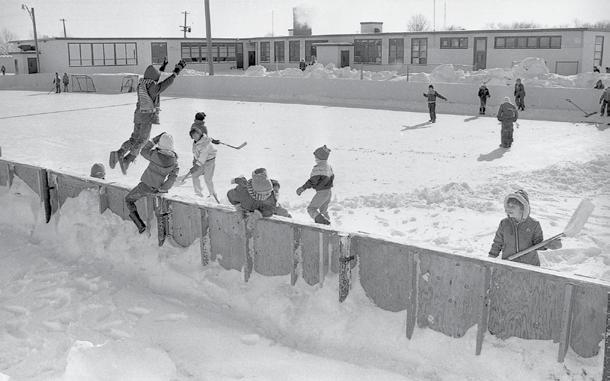
Newly-completed and ready to move in, 1953. A map from 1969 shows McNab Park's location with street names from that time.
McNab Park School, 1981.
Children playing at the rink at McNab School, Feb. 1985.
Photo Credit: City of Saskatoon Archives - Star Phoenix Collection - S-SP-B-2292-002
the first families moved into their new quarters the following November.
In total, 162 PMQs were constructed, including singledetached houses, duplexes and larger buildings of up to six units each. Heated by steam via underground pipes from a central heating plant, they were equipped with the most modern of appliances including electric ranges, refrigerators and washing machines. They had hardwood floors, three-footwide stairways, “oodles” of built-in kitchen cupboards, to quote the newspaper, and four-piece bathrooms, including shower.
new Community Takes Flight
In 1955, the new community was officially named McNab Park after former Saskatoon MLA and provincial Lieutenant Governor, Archie McNab, who died in 1945. A memorial wall and plaque were formally dedicated at a ceremony that summer that included McNab’s wife and his son, Second World War fighter pilot Group Captain Ernie McNab.
McNab Park was a community like any other. There was a community association, which raised money to build amenities like a curling rink and a playground. The school was a little different in that it included a Catholic teacher for students of the Roman Catholic faith. Although it wasn’t part of Saskatoon until 1965, McNab teams competed in the various sports leagues operated by the Saskatoon Playgrounds Association, and there were floats from the McNab playgrounds unit in the Saskatoon Children’s Day parades.
But it was also unlike any other. People lived at addresses like “O-4 and “D-6”, in buildings identical to those found on military bases across the country. It was isolated, far out on the city’s fringe, with fields all around and no bus service. And the people who lived there were all military, which meant that while they came from all over and they never stayed long, they were connected in ways that bound them more tightly than in any other neighbourhood in the city.
But cuts to defence spending in the early 1960s spelled the end of Saskatoon’s air force base. In 1962, the flying schools were moved to Manitoba, taking most of the base personnel with
Photo Credit: City of Saskatoon Archives - Star Phoenix Collection
Photo Credit: Local History Room - Saskatoon Public Library - CP-8251-31
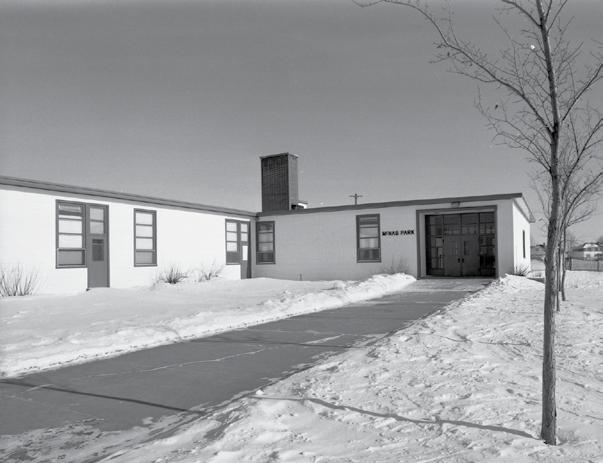
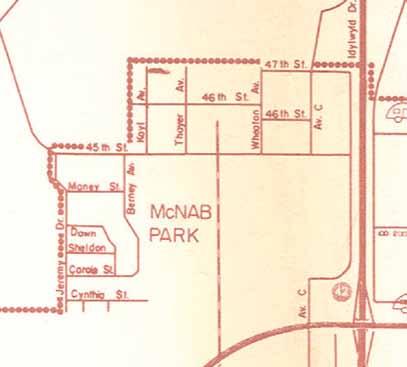
them. A small complement remained behind to support the local reserve unit, but this was temporary. Early in 1964, operations here shut down completely and the base was closed.
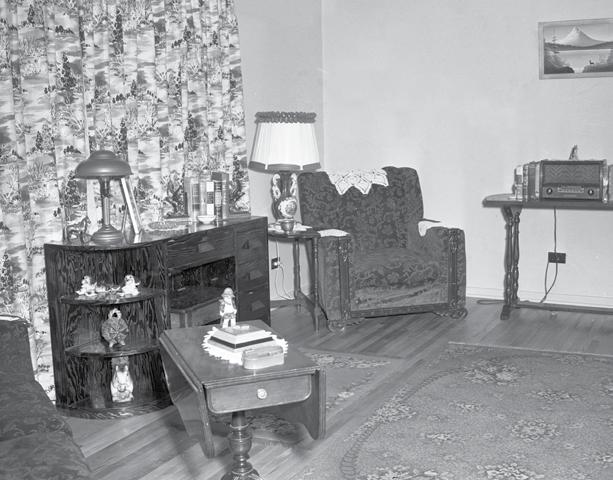
Low Income Housing needed
It was the end of Station Saskatoon. But not the end of McNab Park. The federal Crown Asset Disposal Corporation initially entered into a sales agreement with a private consortium based in Edmonton. But Saskatoon’s City Council wanted McNab as a low-income housing district, of which the city was in desperate need. A tussle of interests ensued. But the city’s plans were contingent on financial assistance from the federal and provincial governments, which was not forthcoming. In the end, McNab was sold to Winnipegbased Framar Investments as a rental property.
The city annexed McNab Park in August 1965. That September, the school was sold to the Saskatoon Public School board just in time to re-open for the 1965-1966 school year. Half-hourly bus service was instituted that fall, and other city services as well, so that it was soon just another Saskatoon neighbourhood.
But the writing was always on the wall for McNab. Isolated and distant, buried in an otherwise industrial district with little likelihood of new construction happening, it was living on borrowed time from the start.
People from there remember it fondly. It was a town within a city, an affordable community with big back yards and places to play, where everyone
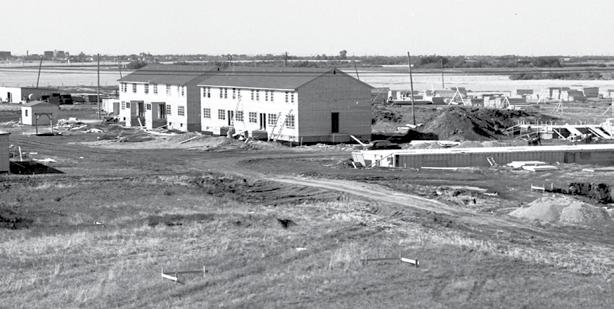
A typical McNab Park home living room, 1952.
Photo Credit: City of Saskatoon Archives - Star Phoenix Collection - S-SP-B-1901-006
PMQs under construction at RCAF Station Saskatoon, 1952.
Photo Credit: City of Saskatoon Archives - Star Phoenix Collection - S-SP-B-1672-003

Multi-unit quarters, 1952.

Photo Credit: City of Saskatoon Archives - Star Phoenix Collection - S-SP-B-1901-002

Boarded-up house on Berney Avenue, 2011. Boarded-up house on Carole Crescent, January 2021.

Photo Credit: City of Saskatoon Archives - Acc. 2011-033. Photo by Jeff O'Brien
knew their neighbours and doors were left unlocked.
mcnab’s Death knell
But over the years, things changed. By 1985, enrolment at the school had dropped to less than a hundred, and the decision was made to demolish it. The president of the community association called it McNab Park’s “death knell.” With the passing years, the neighbourhood became deteriorated further, earning a reputation for crime that got it nicknames like “McStab Park.” In 2001, a police spokesman called the crime rate “staggering.”
In 2008, Saskatoon was booming. Property values were skyrocketing and investors and money were pouring in. One of those investors put up $17 million to buy McNab Park with the goal of turning it into a high-end business park, with hotels and office buildings. This was always the danger of living in McNab: that one day, the landlord was going to decide there was more money to be made using it for something other than low-rental housing. That day had finally come.
Real estate booms are wonderful if you’re high enough up the food chain. But house prices can quickly climb beyond the reach of those at the bottom. By 2008, Saskatoon needed 3,500 new affordable housing units. Losing McNab was going to make the situation even worse.
A new Lease on Life
That year, a private developer named Innovative Residential partnered with the City of Saskatoon to renovate ten of the largest McNab Park buildings and move them to Fairhaven. Habitat for Humanity re-purposed another four buildings. Although showing their age, the houses in McNab had been solidly built of good-quality fir lumber, and the project was a success. Eighty-four living units—just over half of the total housing inventory— were saved from the landfill
Photo Credit: Jeff O'Brien
and given new life serving the needs of Saskatoon’s most vulnerable.
Construction at the Aerogreen Business Park got underway in 2013. By then, only a few of the old McNab Park houses remained, most of them abandoned and empty, with only a handful of people still living there. In the fall of 2020, the last tenants were given notice to move. There are still a few houses out there as of this writing (January 2021) but they are boarded up and empty, the last remnants of a unique moment in Saskatoon’s history.
Jeff O'Brien
exclusive dealer of www.CaRdInalwOOdCRaft.Ca
35% off!
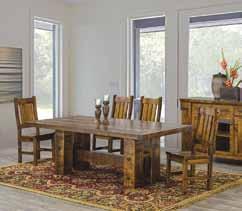
RUstIC maPle Stokenham dining suite new! solid maple mId-CentURy mOdeRn simo dining suite 30% off!


35% off!
Exciting early sPRIng savings!

mId-CentURy mOdeRn Solid maple TRIBECA bedroom suite. Choose wood, stain colour. Headboard choice of wood, fabric or leatherette!

exclusive dealer of www.handstOne.Ca

solid wood fURnItURe Canadian made!
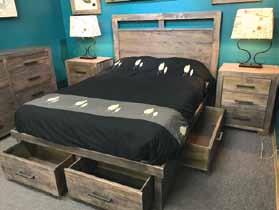
Solid maple steel CIty style condo storage bed suite
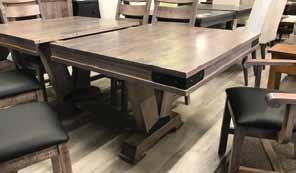
ChaRCOal maPle Rafters dining suite Solid maple ChattanOOga dining suite

30% off!

SOLID MAPLE CANADIAN MADE SUITES 35% off
On sale! 30% off!








